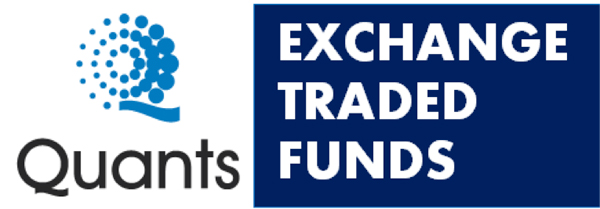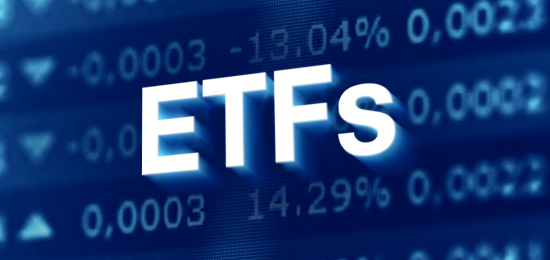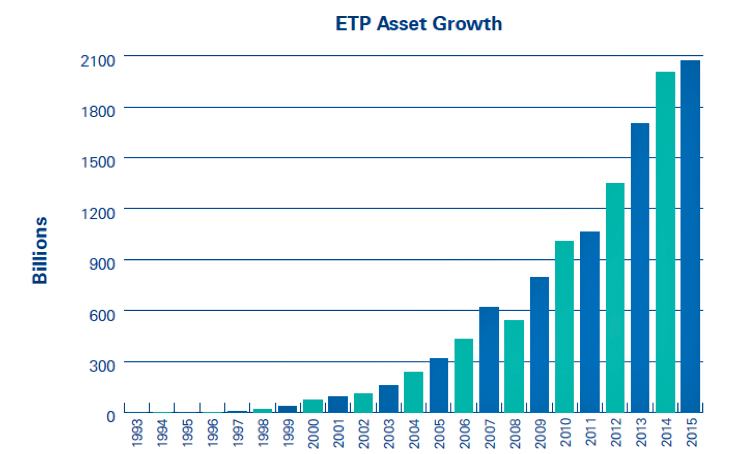
Quants is introducing new volatility ETFs to simplify risk management for both institutional and individual investors. These building blocks will address the potential volatility in the investment portfolios for optimal risk management with Quants Smart Beta Overlays. Quants is building a SaaS platform to provide the analysis tools to determine the appropriate allocation of Quants ETFs for an optimal risk managed portfolio and rebalance them automatically over time.
An ETF, or exchange traded fund, is a marketable security that tracks an index, a commodity, bonds, or a basket of assets like an index fund and trades like a common stock on a stock exchange. ETFs experience price changes throughout the day as they are bought and sold.
Quants Smart Beta ETFs track the Quants Risk Indices and will allow investors to easily add Quants Smart Beta Overlays into their portfolios. Quants will be one of the market makers providing the daily liquidity to these ETFs, making them attractive to individual investors.
Quants Smart Beta ETFs:

- Quants developed smart beta indices to potentially generate better risk-adjusted returns with its proprietary risk and return analysis and optimization technology.
- Quants Risk Indices utilize the derivative overlays and they involve structured derivative strategies for optimal risk and return profiles.
- Smart beta strategies with derivative overlays (smart beta overlays) require the expertise in execution and adequate capitalization in structured investment portfolios to overcome the costs involved.
- Quants ETFs will streamline this risk management process that has been only available to the institutions and make it accessible to the individual investors.

Products
Quants has developed the optimal portfolio insurance indices and will offer the index and sector volatility ETF products that address the risk management up to (implied) volatility boundary for smart beta investing. The Company is planning to release a total of 4 index and 10 sector ETFs to cover the major S&P Dow Jones® index and sector classifications. The two categories of Quants ETFs that cover US index and sector volatility exposures are:
- Quants Index Risk ETFs – These dividend paying ETFs trade the most liquid standardized index derivatives contracts for macro risk coverage. The trading consists of selling index futures and opening credit spread positions at the implied volatility boundary in real-time.
- Quants Sector Risk ETFs – These dividend paying ETFs trade stock and sector options of S&P Dow Jones® sectors for risk coverage of select sectors. They will be released after Index Risk ETFs to offer risk and return optimization for any portfolio.
What do investors like about ETFs?
Below are some advantages that retail and institutional investors can get from ETFs as compared to corresponding mutual funds:- Fees: ETFs typically have lower fees than comparable mutual funds. That’s because the cost of shareholder servicing and recordkeeping is largely eliminated for ETF sponsors..
- Investor objectives: ETFs are well suited to meet investor objectives related to portfolio diversification, liquidity needs, or hedging.
- Intraday trading: ETFs are continuously valued throughout each trading day, and the price of an ETF share is market-derived.
- Liquidity: ETFs can be bought and sold at any time during the trading day, just like a stock. This liquidity factor is particularly important to institutional investors (e.g., pensions), as they can use it to “equitize cash,” or park money for short periods of time.
- Taxes: Both ETFs and mutual funds distribute realized capital gains every year to minimize or eliminate entity level taxes. “But in practice, ETFs often distribute fewer capital gains than comparable mutual funds due to ETFs’ ongoing redemptions of investors in-kind,” observed Flores. “That’s why retail investors may prefer ETFs.” (The tax implications of ETFs versus mutual funds will be addressed in more detail in an upcoming ETF playbook article on taxes.)
- Access: ETFs offer cost-effective access to an array of investment options for any investor with a brokerage account, as well as the ability to short-sell for investors looking for the inverse exposure of an ETF.
- Transparency: ETFs generally must disclose their holdings on an intraday basis, while mutual funds generally have to do it quarterly. While this places an administrative burden on the ETF sponsors, it’s a benefit for investors.

ETF Overview
- The ETF market started in the late 1990s, assets under management (AUM) in ETFs and other exchange traded products (ETPs) grew to more than $1 trillion in 2011 and jumped to more than $2 trillion in 2015.
- Global ETF/ETP AUM is projected to reach $15.5 trillion by 20243 and will likely be a key contender for marketplace supremacy alongside the reigning champ, mutual funds.
- “ETFs are creating dynamic and innovative investment strategies,” noted Sean McKee, KPMG’s National Practice Leader for Public Investment Management. “And ‘actively managed’ ETFs represent the next generation of innovation.”
